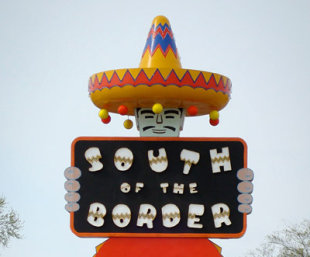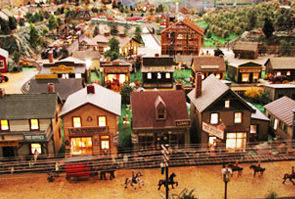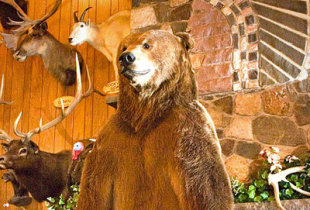By Paul O’Donnell | CNBC
MORE FROM CNBC.COM
More surprising still is that these products of the automobile’s golden age continue to thrive in a time of air travel and triple-digit gas prices. We asked the owners of some of the longest-enduring attractions what allows them to survive.
Read on for some great American roadside attractions:
Wall Drug
Wall, South Dakota
In the depths of the Depression, Ted Hustead’s grandmother drew up signs offering travelers free ice water in order to draw business to her husband’s struggling pharmacy in a tiny town near a nascent Mount Rushmore. Today, Wall’s billboards stretch as far as Minnesota and the store, restaurant and gift shop see as many as 15,000 visitors on a summer day. “We’re on our second- and third-generation customer,” says Hustead, grandson of the founders. “Grandparents want to share an experience that they had when they were a kid.”
That experience has evolved “to entertain, educate and do it with world-class aesthetics,” says Hustead. Famous for its ubiquitous bumper stickers, Wall displays a priceless collection of Western art. In addition to its Yosemite and Rushmore souvenir sales, the Husteads do a half-million dollar trade in cowboy boots alone.
South of the Border
Dillon, South Carolina
The border in question is with Robeson County, N.C., less than a mile up Interstate 95, where alcohol was banned when Al Schafer opened his beer stand in 1949. It attracted not only Schafer’s thirsty neighbors, but high-end “Cadillac customers” bound for Florida. When a souvenir salesman traded his samples for beer one day, “they sold as fast as my granddad put them out,” says Ryan Schafer, who owns the complex today with his father.
The Cadillac customers fly now, but thousands of motorists are lured by 175 billboards that begin in Virginia, to what has become a small town, with a motel, gift shop and restaurant. The first sign that they’ve made it? A vision of Pedro, a 100-foot statue of the mascot.
Roadside America Miniature Village
Shartlesville, Pennsylvania
Beginning in 1903, Laurence Gieringer built more than 300 miniature structures, which he displayed around his hometown of Reading before moving to Shartlesville in 1941. Packed with homes, businesses, and more than 10,000 handmade trees, Roadside America is actually eight villages set in different time periods.
Nostalgia is part of every attraction’s formula, but Roadside America relies on it almost exclusively. The display has not changed since Gieringer died in 1963. Says granddaughter Dolores Heinsohn, the current owner: “I have people thanking me for not changing. Those are the people who mean the most to me.”
The Thing
Dragoon, Arizona
Settling near Interstate 10 after years of touring as a carnival sideshow, the Prince family opened "The Thing!" Museum in 1951 and quickly leased the attraction to the Bowlins, who owned a string of Western-themed travel centers. What is The Thing? Even director of operations Kit Johnson replies, “Don’t know,” but we can reveal that after 50 billboards spanning more than 300 miles, the “Mystery of the Desert” is somewhat anti-climactic. But surrounded by eerie dioramas and Native American trinkets, The Thing still draws 50,000 visitors a year, testifying to the power of the billboard build-up.
Space Farms Zoo and Museum
Sussex, New Jersey
Parker Space calls his family’s 84-year-old zoo, farm museum and restaurant “a lifestyle, not a job.” That lifestyle includes farming 180 acres to supplement feed for the hoof stock, removing road kill from local byways (which is fed to the zoo’s big cats) and tending to a menagerie of more than 500 animals, including lions, tigers and seven species of bears.
Space has a dedicated employee handling regulatory paperwork, a costly reality for every small business that in Space’s industry at least, keeps other costs down. “If you could put a lion on eBay, he’d go for $100,000,” says Space. “But buyers are limited to places where it’s legal to keep him.”





No comments:
Post a Comment